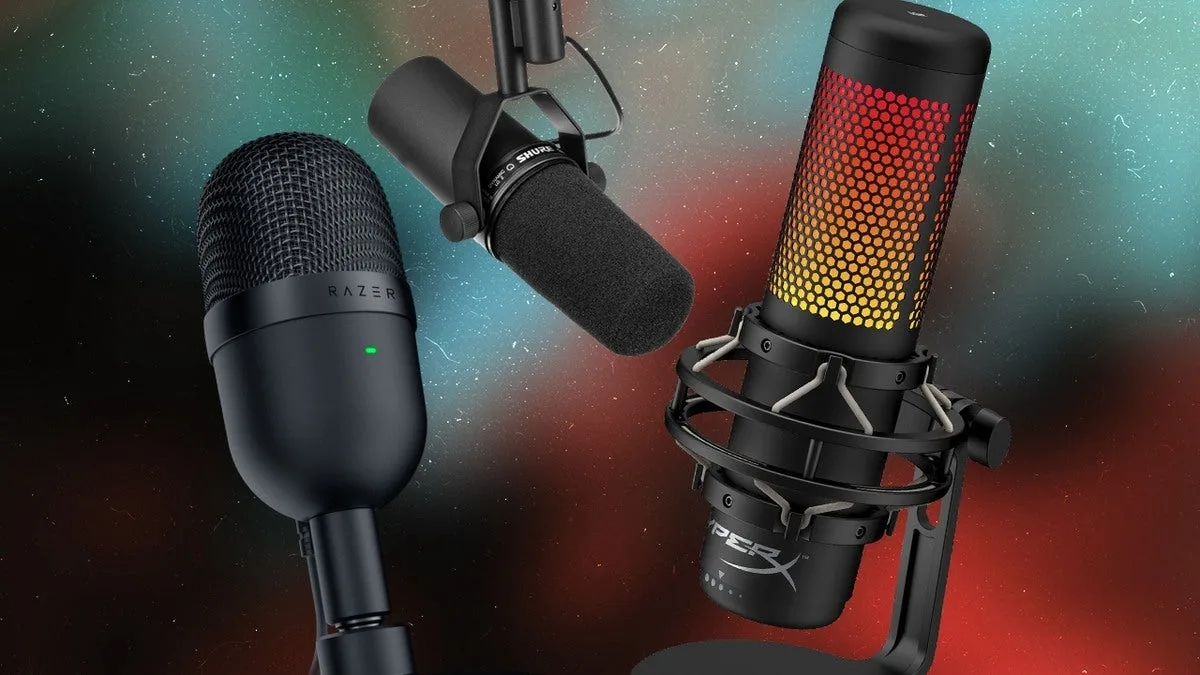Top Microphones for Podcasting and Streaming

1. Are XLR mics good for streaming?
Yes, XLR mics are great for streaming, especially if you’re looking for high-quality sound and plan to integrate other audio equipment, like mixers or audio interfaces. They tend to offer better audio quality than USB mics, as XLR allows for more professional setups and finer control over sound levels.
2. Is USB or XLR better for podcasting?
- USB mics are convenient and easy to set up, making them great for beginners or podcasters looking for a plug-and-play solution.
- XLR mics provide higher audio quality, more flexibility, and better options for sound mixing, making them ideal for more professional setups. However, they require extra gear, like an audio interface or mixer.
3. What are the best microphones for podcasting (XLR)?
- Shure SM7B: Highly regarded for its versatility and warmth in vocal recording.
- Electro-Voice RE20: A favorite for broadcasters, known for its smooth tone.
- Audio-Technica AT2020: Affordable and high-quality.
- Rode Procaster: Excellent for voice clarity, often used in professional podcast setups.
4. What is the best USB mic for podcasting?
- Blue Yeti: Popular due to its multiple polar patterns and ease of use.
- Audio-Technica ATR2100x-USB: Offers both USB and XLR outputs, great for versatility.
- Rode NT-USB: Known for its sound quality and robust build.
- Elgato Wave:3: Great for streamers and podcasters, with built-in software for mixing audio.
5. Is a USB mic good for streaming?
Yes, a USB mic can be an excellent choice for streaming, especially if you want a simple, affordable, and easy-to-use setup. While XLR mics might offer better quality, USB mics like the Blue Yeti or Elgato Wave:3 deliver solid audio performance without the need for extra equipment.
6. What type of microphone is best for streaming?
Dynamic microphones are typically preferred for streaming because they minimize background noise and focus on the speaker’s voice. For example, the Shure SM7B (XLR) or Rode Podcaster (USB) are highly rated for streaming.
7. Which mic is better for podcasting?
It depends on your setup:
- USB mics like the Blue Yeti are better for simplicity and plug-and-play.
- XLR mics like the Shure SM7B offer superior sound and flexibility if you’re willing to invest in an interface.
8. Can I use 2 USB mics for a podcast?
Technically, yes, but it’s tricky. Many recording programs have trouble recognizing multiple USB mics at once. If you need to record multiple voices, it’s easier with XLR mics and a multi-channel interface.
9. What audio type is best for a podcast?
- WAV: Uncompressed and high-quality, ideal for production.
- MP3: Compressed, smaller in size, easier for distribution.
Most podcasters record in WAV for editing, then convert to MP3 for upload.
10. What is the best microphone position for podcasting?
The best position is about 6–12 inches from your mouth, angled slightly off-center to avoid popping sounds. Use a pop filter or foam cover to reduce plosive sounds.
11. Does XLR make mic sound better?
Yes, XLR mics often sound better than USB mics because of better signal quality, more dynamic range, and flexibility in audio control when using external preamps, mixers, or interfaces.
12. What is the best microphone pattern for podcasting?
The cardioid polar pattern is the most common for podcasting. It picks up sound from the front while rejecting noise from the sides and back, focusing on the speaker’s voice and minimizing room noise.
13. How many microphones do you need for a podcast?
It depends on the number of speakers. Typically, you’ll need one mic per person. Sharing a mic can result in uneven audio levels, so it’s best to have a mic for each host or guest.
14. Is one mic enough for a podcast?
Yes, one mic can be enough, especially for solo podcasts or if you’re sharing the mic with a guest. However, having separate mics for multiple speakers is generally better for sound quality and clarity.
15. Should I get a dynamic or condenser microphone for podcasting?
- Dynamic mics are better for untreated rooms as they pick up less background noise and are more forgiving of room acoustics.
- Condenser mics are more sensitive and provide a richer sound but require a quieter, treated environment. If you’re in a noisy room or prefer simplicity, a dynamic mic is often the better choice.


